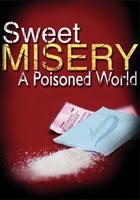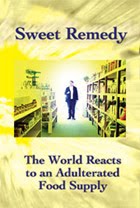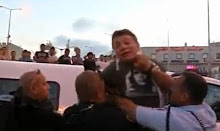Guardian
We've studied a century's worth of social unrest and the data suggests austerity measures can lead to riots
When London stopped burning, the political debate about the causes of unrest began to heat up. At one end of the spectrum, Ken Livingstone blamed the government's cutbacks; at the other, David Cameron attributed the unrest to criminal behaviour, pure and simple. Many of the cuts announced by the coalition government haven't been implemented yet; but it is also true that there is real deprivation in many parts of London, and local services have been cut in some areas already. So, where do sudden conflagrations such as in London last week come from?
A constructive way to approach such a complex question is to distinguish between the incidents that touch off unrest, and the underlying causes that make it more likely. When a petrol station burns down, you don't just want to know who dropped the cigarette; you want to know why all the combustible fumes escaped. Social unrest and instability is typically difficult to explain. In most years, nothing happens; then, suddenly, violence erupts. Academics have tried to understand which factors are involved in creating explosive social environments. According to work on US race riots by the economist Ed Glaeser, for example, ethnic heterogeneity in a neighbourhood increases the probability of unrest. So does unemployment; Poverty, on the other hand, seems to play a smaller role.
In a recent study, we focused on the link between austerity measures and unrest. We analysed a large number of countries, over almost a century, to unearth some empirical regularities. In two studies, we analysed unrest in 28 European countries from 1919 to 2009, and in 11 Latin American countries since 1937. What we found is a clear and positive statistical association between expenditure cuts and the level of unrest.
To construct our measure of unrest, we looked at five indicators: riots, anti-government demonstrations, general strikes, political assassinations, and attempted revolutions. In a typical year and country, there are about 1.5 incidents of this type. The more you cut, the more incidents you get. By the time austerity measures hit 3% or more, the number of incidents has doubled. Interestingly, for the UK, the pattern is even stronger: for every percentage point of cut-backs, instability surges by more than it does on average in the rest of the countries. Importantly, these effects are in addition to the well-known relationship between lower growth (associated with more unemployment) and higher instability.
While the pattern holds throughout our sample, the relationship is not deterministic – the chance of unrest goes up as governments retrench, but it is not guaranteed. Many incidents, such as police brutality, as in the case of Rodney King in LA in 1992, or the killing of Mark Duggan in London, can provide the spark that leads to a conflagration. One reason why times of austerity could create the right environment for massive unrest is, in our view, that cut-backs usually hit some parts of the society disproportionately more than others.
Interestingly, tax increases do not have the same effect. While they are also associated with greater instability, the effect is small, and the link weak. This suggests that governments wanting to retrench, but worried about social instability, should consider tax increases, first and foremost.
These findings cast doubts on established wisdom. Until the sovereign debt crisis of 2010, the consensus among economists was unambiguous – expenditure cuts can be growth-enhancing. Also, there was a widely accepted view that there is no penalty at the ballot box for cuts. Governments that implement huge austerity programmes are just as likely to win as the ones doing nothing. While recent research by the IMF casts some doubt on the economic benefits, our results question the political economy side of the story – cuts may not imperil re-election, but they create the risk of major social and political instability.
Nobody knows where and when social unrest is going to happen again, nor the scale it will take. However, history suggests we should not underestimate the consequences of social chaos. Germans to the present day remember Heinrich Brüning, known as the "hunger chancellor", who led the country from 1929 to 1932. He presided over an unprecedented austerity programme. At the same time, the Weimar Republic, Germany's first attempt at democracy, disintegrated amid a wave of social unrest and political violence.
Add to Your Blogger Account
Put it On Facebook
Tweet this post
Print it from your printer
Email and a collection of other outlets
Try even more services
We've studied a century's worth of social unrest and the data suggests austerity measures can lead to riots
 |
| Incidents of police brutality, such as the beating of Rodney King in LA in 1992, can provide the spark that leads to conflagration. |
A constructive way to approach such a complex question is to distinguish between the incidents that touch off unrest, and the underlying causes that make it more likely. When a petrol station burns down, you don't just want to know who dropped the cigarette; you want to know why all the combustible fumes escaped. Social unrest and instability is typically difficult to explain. In most years, nothing happens; then, suddenly, violence erupts. Academics have tried to understand which factors are involved in creating explosive social environments. According to work on US race riots by the economist Ed Glaeser, for example, ethnic heterogeneity in a neighbourhood increases the probability of unrest. So does unemployment; Poverty, on the other hand, seems to play a smaller role.
In a recent study, we focused on the link between austerity measures and unrest. We analysed a large number of countries, over almost a century, to unearth some empirical regularities. In two studies, we analysed unrest in 28 European countries from 1919 to 2009, and in 11 Latin American countries since 1937. What we found is a clear and positive statistical association between expenditure cuts and the level of unrest.
To construct our measure of unrest, we looked at five indicators: riots, anti-government demonstrations, general strikes, political assassinations, and attempted revolutions. In a typical year and country, there are about 1.5 incidents of this type. The more you cut, the more incidents you get. By the time austerity measures hit 3% or more, the number of incidents has doubled. Interestingly, for the UK, the pattern is even stronger: for every percentage point of cut-backs, instability surges by more than it does on average in the rest of the countries. Importantly, these effects are in addition to the well-known relationship between lower growth (associated with more unemployment) and higher instability.
While the pattern holds throughout our sample, the relationship is not deterministic – the chance of unrest goes up as governments retrench, but it is not guaranteed. Many incidents, such as police brutality, as in the case of Rodney King in LA in 1992, or the killing of Mark Duggan in London, can provide the spark that leads to a conflagration. One reason why times of austerity could create the right environment for massive unrest is, in our view, that cut-backs usually hit some parts of the society disproportionately more than others.
Interestingly, tax increases do not have the same effect. While they are also associated with greater instability, the effect is small, and the link weak. This suggests that governments wanting to retrench, but worried about social instability, should consider tax increases, first and foremost.
These findings cast doubts on established wisdom. Until the sovereign debt crisis of 2010, the consensus among economists was unambiguous – expenditure cuts can be growth-enhancing. Also, there was a widely accepted view that there is no penalty at the ballot box for cuts. Governments that implement huge austerity programmes are just as likely to win as the ones doing nothing. While recent research by the IMF casts some doubt on the economic benefits, our results question the political economy side of the story – cuts may not imperil re-election, but they create the risk of major social and political instability.
Nobody knows where and when social unrest is going to happen again, nor the scale it will take. However, history suggests we should not underestimate the consequences of social chaos. Germans to the present day remember Heinrich Brüning, known as the "hunger chancellor", who led the country from 1929 to 1932. He presided over an unprecedented austerity programme. At the same time, the Weimar Republic, Germany's first attempt at democracy, disintegrated amid a wave of social unrest and political violence.
Help Us Transmit This Story
Add to Your Blogger Account
Put it On Facebook
Tweet this post
Print it from your printer
Email and a collection of other outlets
Try even more services






























No comments:
Post a Comment